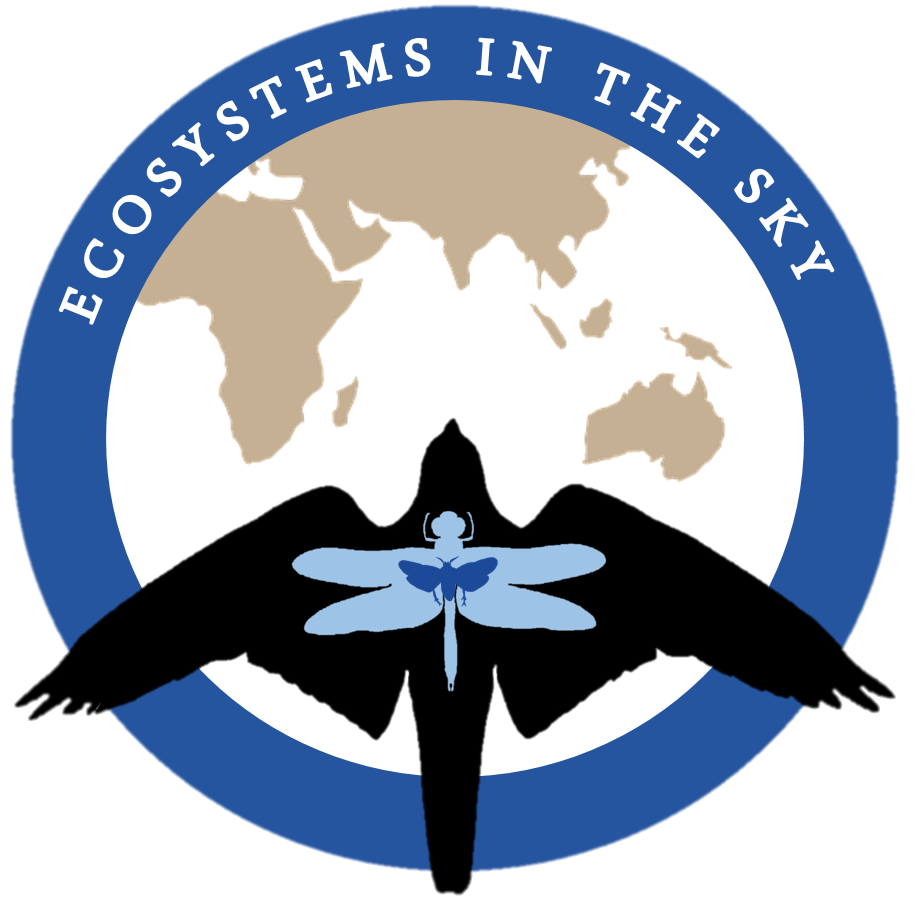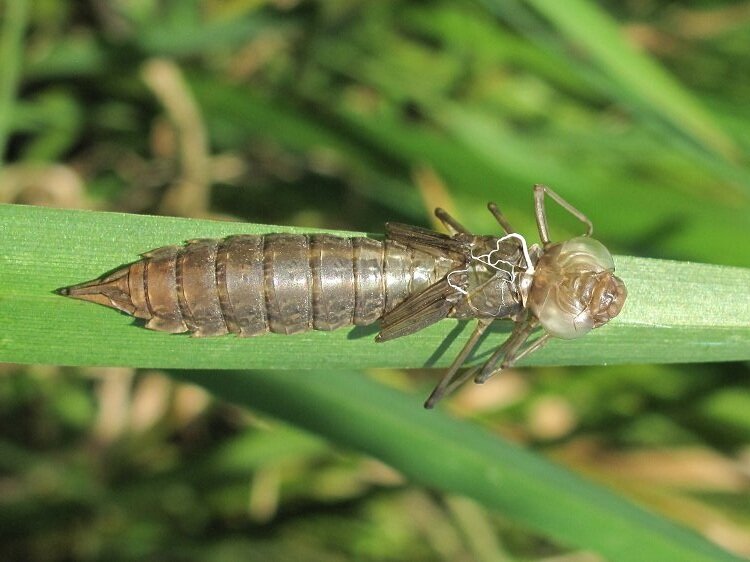Help out with the project to create a large-scale migration map of Europe by sending in exuviae you find
What is exuviae?
The photo gallery to the right shows a southern hawker (Aeshna cyanea) emerging from its exuvium. In the beginning, the adult is pale and the wings are folded up, but after a couple of hours, the wings have been pumped up and dried. The new, fresh adult is known as a teneral.
The exuvium (exuviae in plural) is left behind when the adult teneral dragonfly flies away. The exuvium is a shell, the only thing that remains of the dragonfly larvae, or nymph, when the adult has emerged.
Most dragonfly species live longer as nymphs than as adults, and the exuviae they leave behind as adults is a biological footprint of the freshwater lake, pond, stream or pool they lived in.
Photographer: Friedrich Böhringer (wikimedia commons licens)
Why send in Exuviae?
Dragonfly nymphs are aquatic, and they carry with them markers from the water they developed in, both during their nymph life in freshwater and as fully emerged adults. These markers, isotopes, differ in a gradient across the world, and across Europe, a pattern that is created because of differences in rainfall. When you catch an adult dragonfly, you can determine where it was developing as a nymph by analysing the hydrogen isotopes in its wings. But in order to calibrate what the isotope signature looks like in dragonflies, one must have a couple of samples of known origin. Exuviae are ideal to analyse for this purpose, as they are always found in or near the freshwater where the dragonfly once lived.
Send in exuviae you find!
Anyone who wants to can send in exuviae, the important thing is that you dry the specimen and that you note where and when you collected it. There are about 120 dragonfly species in Europe, and about 5200 in the world. Of the 5200, only approximately 100 are migratory. In Europe there are around 17 migratory species: Aeshna affinis, Aeshna cyanea, Aeshna isoceles, Aeshna juncea, Aeshna mixta, Anax imperator, Anax parthenope, Crocothemis erythraea,Hemianax ephippiger, Libellula quadrimaculata, Sympetrum danae, Sympetrum depressiusculum, Sympetrum flaveolum, Sympetrum fonscolombii, Sympetrum sanguineum, Sympetrum striolatum, Sympetrum vulgatum. Identifying a dragonfly species from the exuviae can be very difficult, however, for this project it is not necessary. The important thing is to have samples from many different freshwater environments around Europe. If you have an exuviae from somewhere outside Europe, you can get in contact to discuss the possibility of sending this specimen as well.
Click HERE to download a document explaining how to collect exuivae, dry them and send them to the project
Click HERE for a link to a field guide on how to identify exuviae of British dragonflies
Sympetrum fonscolombii, photo by: Quartl
Hemianax ephippiger, photo by Guillaume D
Aeshna mixta, photo by: Dirk Funhoff
Libellula quadrimaculata, photo by: Siga






